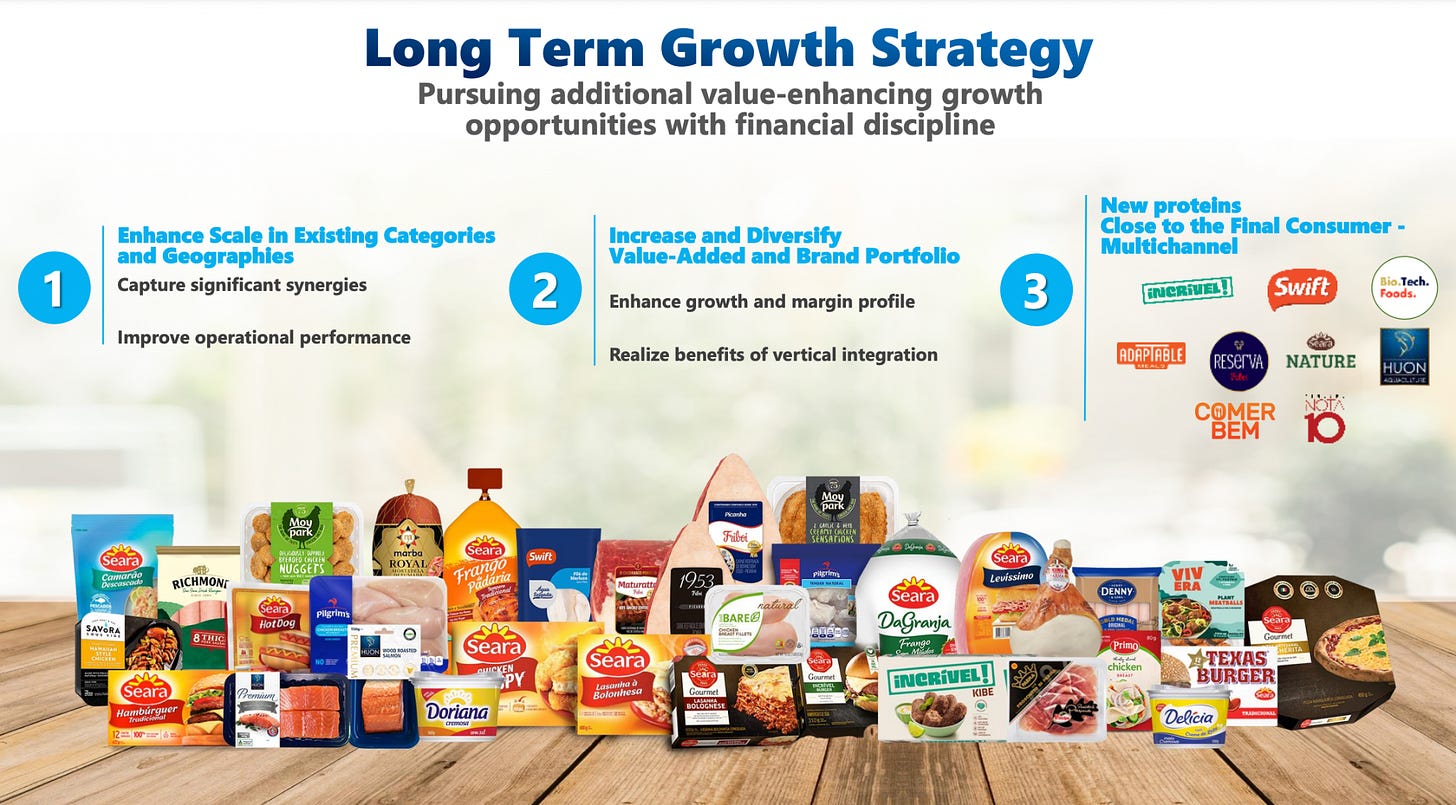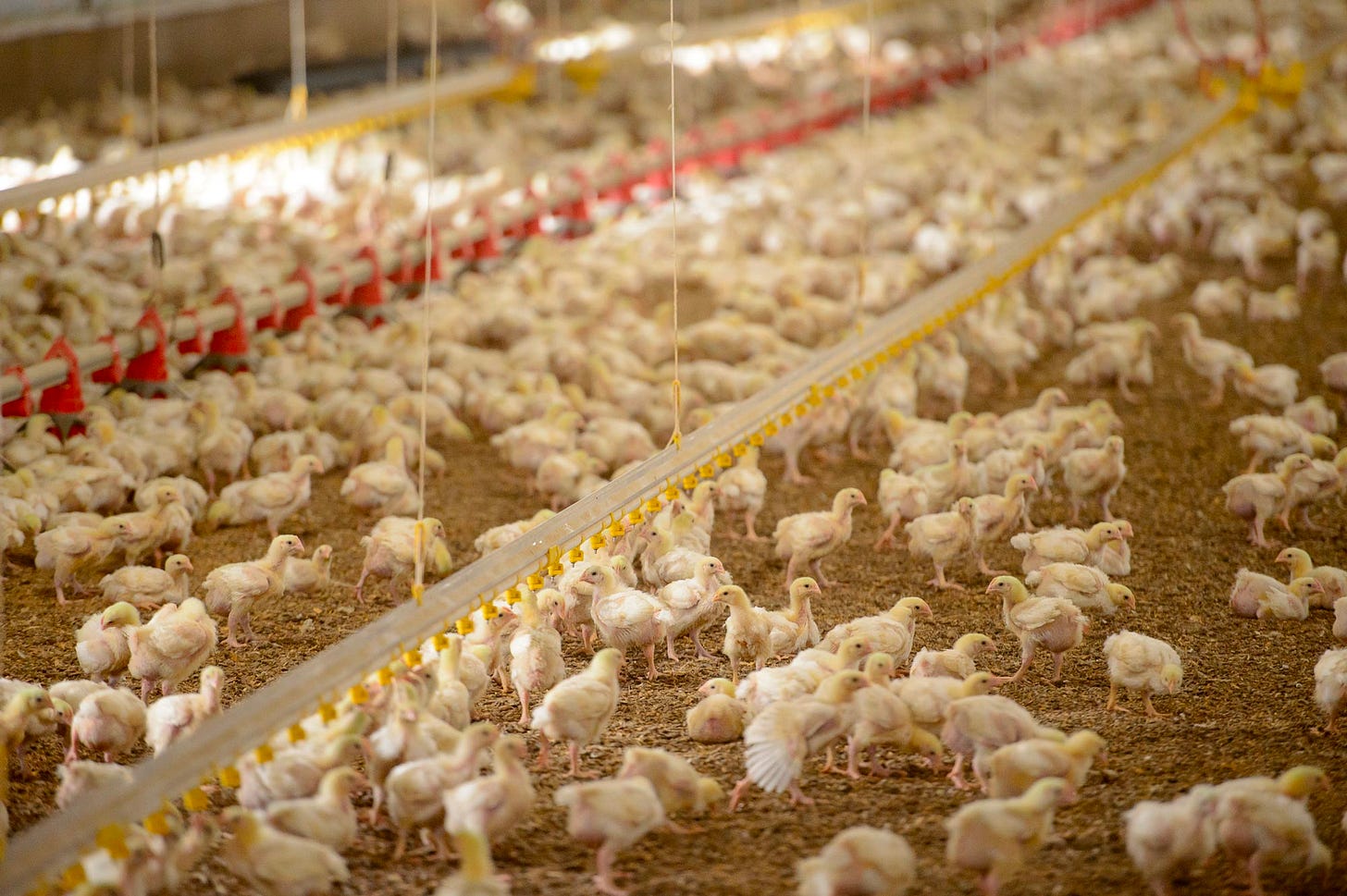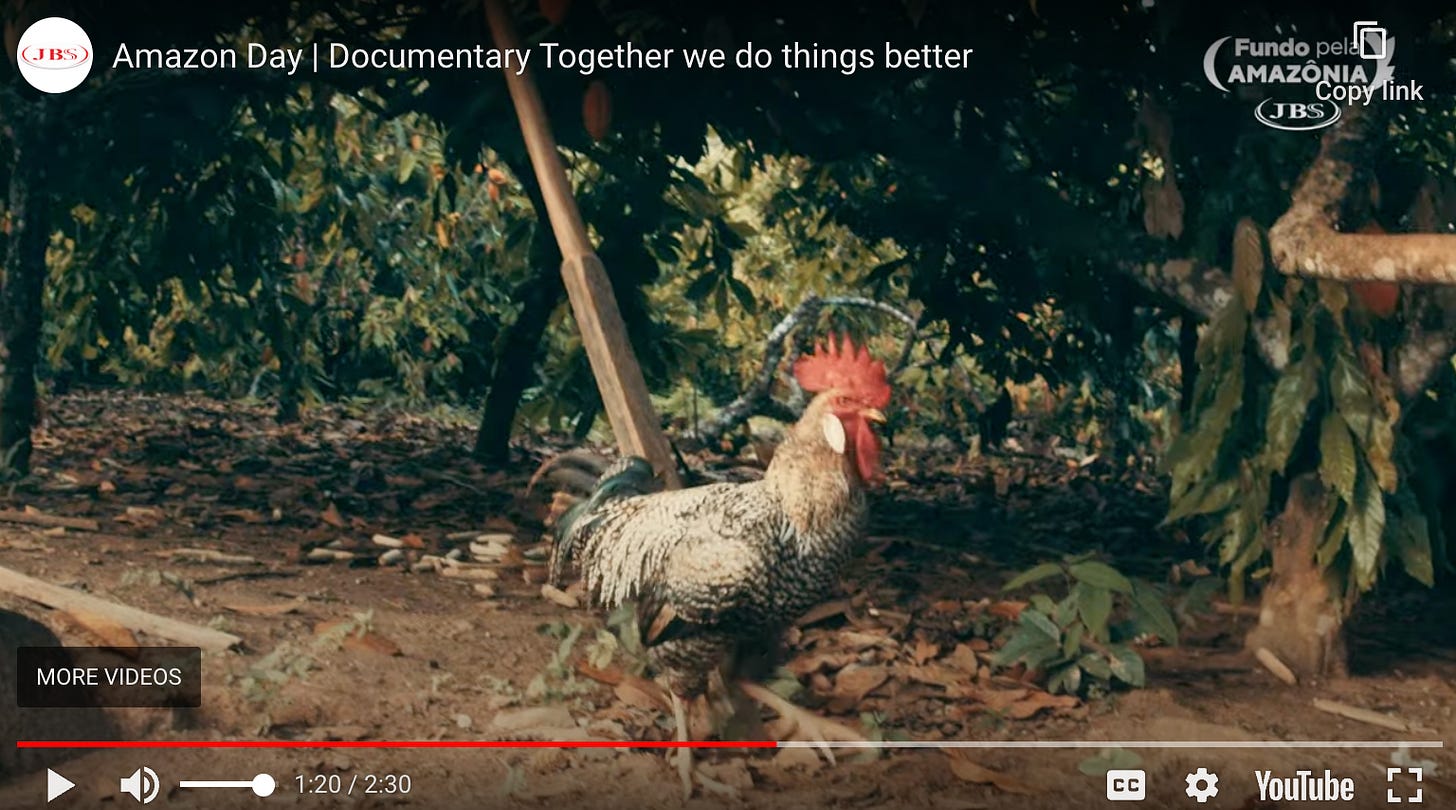Purpose Is As Purpose Does
Tell the truth on purpose: a case study from the global meat industry

(This post is also available in podcast format, here.)
Many businesses claim to be purpose-led. They proudly state their purpose in order to attract and motivate talent, or to gain other intangible benefits that come from a rosy reputation.
Yet all too often this purpose does not reflect how they make money, it’s not their actual purpose. It’s nice-sounding words that obscure reality.
And obscuring reality is harmful to you and me and the biological web of life that supports us. I’ll pile on and add that I don’t buy the idea that purpose is “aspirational.” Corporations’ actual purposes are not accidents. They are the result of carefully crafted strategies. Companies are doing exactly what they are designed to do. If anyone has any doubt, they need only compare a company’s stated purpose to what its executives tell investors. It’s not a secret these are different things.
In this piece, I’ll share a glaring example of what this difference looks like. There are almost as many examples as there are large publicly traded companies. I picked a doozy so you can’t unsee the point.
Before we get into the example, I’ll illustrate what needs to change.
Heads up: it’s big! But we’ve done way bigger things before. As I mentioned in my opening post it’s not only fun here in the Matereal World. I also left breadcrumbs to figure out what is each of ours to do.
There is a path. We need to choose it.
Recommended change: words or deeds
There are two options to fix this existential purpose problem.
Company leadership can correct the words used to describe their purpose so it reflects reality, empowering employees, investors, and others to make decisions accordingly instead of accepting untruths, feeling gas-lit, or acting on misinformation; or…
Those responsible can change the business model so that revenue is generated in service of the stated purpose.
(There is no #3. Continuing as things are is not an option in an economy that works in service of life, and arguing to continue as things are is an argument for life to continue serving the economy. No thanks.)
I vote for option #2—changing the business model. But I’ll lay bare the glaring example and you can decide which option works for you based on what’s yours to do.
When “the best there is” is terrible
Global meat company JBS’s stated purpose is to “feed the world with the best there is.” This sounds nice. Everyone in the world needs to eat, and eating the best there is sounds great.
But what the company actually does to generate revenue—about $65 billion (US) in 2021—is process millions of industrially raised mammals, birds, fish, and plants into packaged foods and byproducts such as leather, oils, and collagen, as efficiently as possible to maximize profits. As it makes clear in investor presentations and through its actions, that is its purpose.

This may involving feeding a lot of people. But it’s nowhere close to “the best there is,” neither for the humans nor the web of life that supports us. Mass-produced packaged goods are at best not great (even if cheap and convenient) and the impact of much of the business is terrible.
If executives—and the public disclosures they authorize—don’t truthfully state the company’s purpose, then it pretends that what’s happening to fulfill the “purpose” is okay, when it is not.
No more pretending.
This is not a copy writing problem
The comparison of stated vs actual purpose offered above came to my attention through a Matereality assessment I conducted on JBS, which is the world’s largest meat company. Food is admittedly a subjective topic. It’s personal. Cultural. Emotional. Defining “the best there is” is no small thing. And feeding the world is a big task. So it would be hard to state a purpose such as this succinctly.
However, a flurry of positive words placed between most stakeholders and reality does not change what is true.
This issue isn’t a copy writing problem (although JBS has some of those too, where their purpose varies within the same report—see slide 43—which caused flashbacks to the Herb Tarlek is a hard worker meme, for any WKRP fans out there). No, it’s not a copy writing problem. It’s a failure to ground the business model in activities that contribute to a life worth living, while masking how profit is gained through ecological and societal harm.
In search of “the best there is”
When you think of “the best there is” in terms of food, what comes to mind? Do you imagine huge feeding and slaughtering facilities where the humans’ jobs are to prevent injury and disease (to the animals, also trying to avoid injury themselves), in support of millions of efficient deaths? Does this feel like the right relationship between the working humans, the eating humans, the animals, and the rest of life?
For example, the chickens in the JBS facility pictured below—does this look like “the best there is”? (Realizing this is on their website so it may well be the best there is chez JBS.)

The company also features communities that raise animals and cultivate forest-based food products, who are recipients their charitable dollars.

One could reasonably argue that the people in these showcase videos do indeed represent “the best there is”. They are living in right relationship with the soil, the animals, the trees, and the wider web of life.
But those stories aren’t about how JBS makes money—they’re about how they give (a relatively small amount of) money away. The story of how these communities are still surviving in the Amazon in spite of economic and social pressures could be titled No thanks to the meat industry—but that’s a tangent I’ll skip for now.
The point is, the way the company makes money is life-crushing. Literally. And while I can’t speak for the people who work there, I have to wonder if many of the 250,000 employees’ jobs are soul-crushing, too.
“The best there is” is much, much better than this.
Which came first, harmful business practices or fake purpose?
In the spirit of the “chicken vs egg” riddle, I could ponder which came first, the business model predicated on harming life to make a profit, or the fluffy language wrapped around it to soothe us into a gentle shopping slumber.
Or I could invite another approach. I’m going to go with another approach.
We know how to live in right relationship with animals and plants. This isn’t about promoting a vegan agenda or telling people what to eat. Nor is it about romanticizing Indigenous or rural populations. It’s about being honest, not pretending that industrialized food production is in any way good for our environment, our workforce, or our bellies—our lives. It’s about pursuing “the actual best there is”.
Many people have been producing and eating “the best there is” for generations, while enhancing biodiversity and human health, in spite of the so-called development opportunities foisted upon them. Others are moving through a sort of collective remembering, seeking out foods and producers who bring “the best there is” to market, to their families’ kitchens, to their schools, and restaurants.
Meanwhile large companies marginalize small producers (and then charitably offer them hand-outs). This is a shameful glossing over of oppression, a legacy of land theft, and an exploitation of national policies that favour financial growth over biological wellness.
Start with truth, then pick a path
We have a long way to go before industrial food companies’ business models reflect a purpose worth getting behind. But if we aren’t honest about what is going on, the chance of making the shift towards industrial healing is less than zero.
Admittedly, when a company opts for Option 2, to change its business model, the path ahead is complex. They will need to learn new and different ways of operating. One place to look is with the people already doing this. (Note: this does not mean steal from, co-opt, coerce, rebrand, or further marginalize, it means respectfully centering their knowledge and needs, and even shifting decision-making, and relationships.) This likely requires pausing a significant portion of the current business to adapt, redesign, and reset.
Don’t have a hairy canary on me for pointing this out. I’m not the one who earned $65 billion in one year wreaking havoc on life, and I’m not the one claiming to feed the world with “the best there is.”
There are many people producing “the best there is.” We don’t have to start from scratch we just have to stop pretending and start redesigning companies to serve life.
The communities JBS features in the Fund for the Amazon work are already functioning this way, as are others even closer to JBS’s headquarters in São Paulo—such as the Cooperquivale cooperative. A family from this cooperative shared their knowledge and experience in this curated conversation:
For a North American perspective, one of the farmers interviewed for the JBS Matereality assessment (among several others, all of whose comments are publicly available—see slide 57) provides insights regarding the economic and social realities of consolidated abattoirs which is quite salient in relation to JBS’s business model (at the 22-minute mark).
Let’s be better
I have no doubt that these fundamental shifts are possible if the people making decisions about the (actual) purpose of the company see the value of serving life, and ending the ways that are harmful. In fact, in many ways I believe a food-producing giant such as JBS is in a great position to do so. They are committed to feeding a lot of people. They have tremendous financial, people, and infrastructure resources. And they reach numerous regions and points of critical commodity exchange.
What’s missing is a commitment to be part of a system that creates and distributes the best there is, and a legitimate strategy based on real purpose.
Having had the great joy and privilege of eating meals made with foods produced by some of the people featured in the links above, I can say it is without a doubt the best there is.
For a more detailed discussion of purpose in relation to the business model, Geoff Kendall (founder the Future-Fit Business Benchmark as well as the Transition Agency) and I go deep into the question in this 45-minute conversation, using the the JBS Matereality assessment as an example:
Thanks for reading! I welcome your comments, questions, and requests.
Speaking of purpose, mine is to foster the shift to an economy that works in service of life. That’s the only way I generate revenue.

